L’Épuisette, a famous Bouillabaisse restaurant, is the advice I get when friends hear that I’m heading to Marseilles. Well, the friends who trawl the world based on where they want to eat. For my other pals, the reaction is more one of disbelief. “What? It’s so dangerous, why are you going there?”
The recent publication of the book Tueurs à Gages (Hitmen), by three crime correspondents for Le Parisien newspaper, chronicling a wave of narco crime emanating from Marseilles, may have you questioning things further, but the reality is, the serious crime associated with this port city is largely confined to a few neighbourhoods in the north. Strolling along the Vieux Port at midnight feels considerably safer than many of Dublin’s streets at 7pm.
Marseilles is having a moment. A city of 111 villages and 14 ports, its vibrant mix of Armenian, Italian, Spanish, Comoran and north African communities is woven into the fabric of daily life, giving the city its anti-Paris, unique edge. Some argue that the surge in trendy new spots is pushing Marseilles towards gentrification. Others see these developments as long overdue, finally transforming the city into the cultural hub it deserves to be.
There’s no denying that Marseilles has never felt more dynamic. The Notre-Dame-du-Mont district was recently named the world’s coolest neighbourhood by Time Out, and influencers flood social media with images of Instagrammable spots, such as Tuba Club and Cécile Food Club. But with this comes protest, as activists rally against Airbnb for driving up rents. Like other cities grappling with a tourism boom, Marseilles walks the line between reinvention and displacement.
READ MORE
My first meal has to be bouillabaisse, a symbol of Marseilles’s roots. Food writer MFK Fisher described it as a reflection of the city: rough around the edges but full of life. What started as a fisherman’s stew made from unsellable fish such as scorpionfish has evolved into a celebrated dish. The real thing is not easy to find, and you can expect a hefty price tag. The top spots? Chez Michel, Chez FonFon, Miramar, and the aforementioned one-Michelin-star L’Épuisette, where I head on a night when the Mistral is blowing hard, spraying the dramatic windows with salt and sand, blurring the sweeping views of the rugged sea on one side and the port of Vallon des Auffes on the other.
It’s a smart spot with white linen-covered tables, quietly posh but relaxed, with Birkin bags stowed on neat handbag stools. There are a number of options, but everyone here is focused on the €130 Marius menu. After a series of delicious amuse-bouches, the bouillabaisse is served in two courses.
First comes the broth – light, fresh, and not over-extracted, served with croutons and rouille. For the second serving, the fish selection is brought to the table before it is cooked. It always includes scorpionfish and a minimum of four others, red mullet and sea bass generally being part of the mix. The fish, which has been cooked gently in the broth, comes on a large platter, off the bone, with a rich reduction of the fish soup and potatoes. You cannot visit Marseilles without having a truly great bouillabaisse, and here it is the real deal.
To discover the “belly of Marseilles”, I take a food tour to Noailles district with Culinary Backstreets the following day. Before hitting Noailles, the tour visits Anahit, an Armenian food shop in the 1st arrondissement, where you get a direct link to the city’s history as home to Europe’s largest Armenian community. Ouzo, arak and raki line the shelves in the most fascinating bottles – pistols, artillery shells, AK-47s and Russian stackable dolls.
We take a stroll down Boulevard Longchamp, once notorious for drugs but now a tranquil spot to enjoy a coffee at Longchamp Palace, a cafe that seamlessly transforms from a morning newspaper-and-coffee haven to a bustling wine bar and party spot by night. We sample navettes, Marseilles’s traditional boat-shaped biscuits, scented with orange blossom, and canistrelli, Corsican olive oil and aniseed specialities.
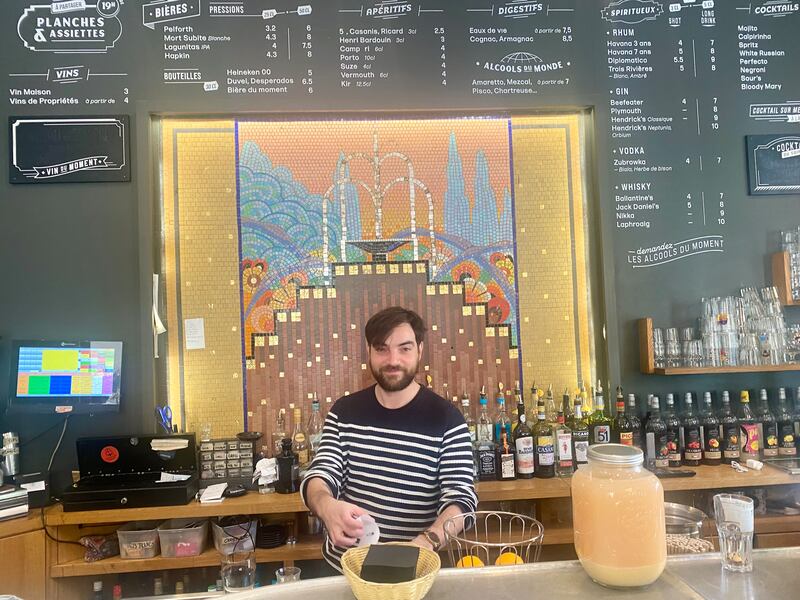
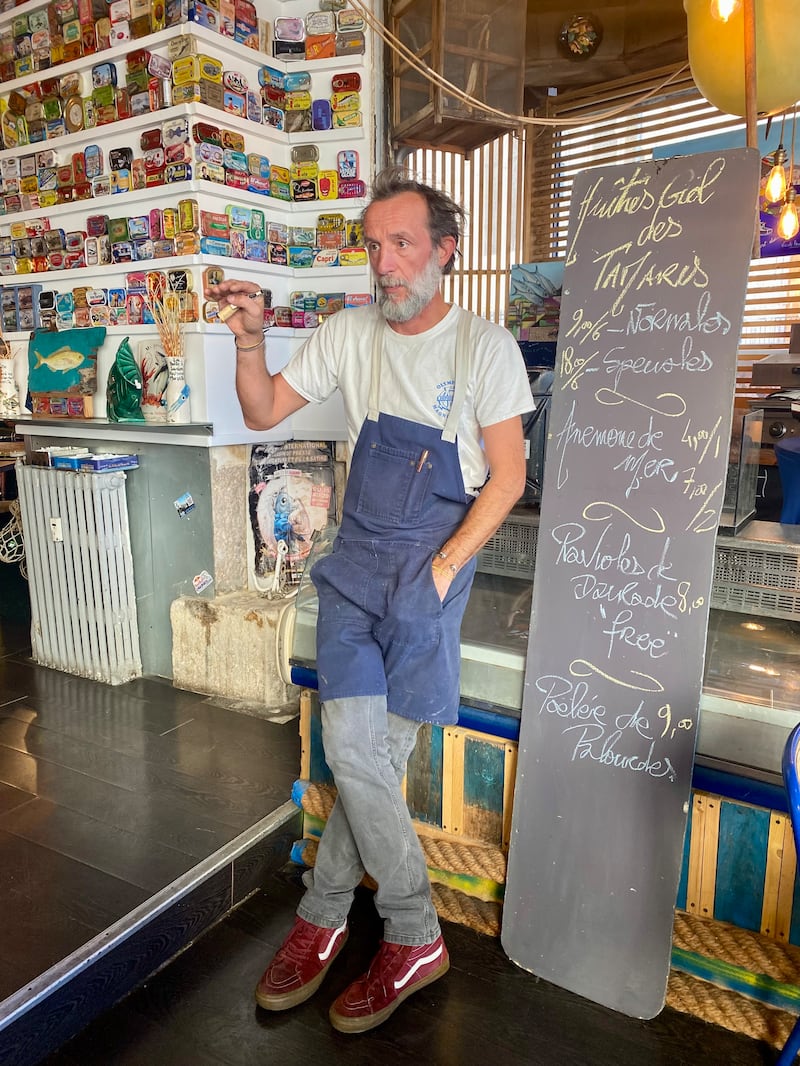
For lunch, it’s La Boite à Sardine on Boulevard de la Libération, a kitsch, nautical-themed restaurant where the food is serious. The chef patron, Fabien Rugi, displays a blackboard and calls out the day’s fresh catch. We feast on deep-friend anemones (a bit like large oysters), stuffed sardines with goat’s cheese and olives, and crisp-fried ravioli filled with daurade.
Noailles is next, where north African, west African and Asian cultures collide. Men in djellabas sip mint tea outside Chez Yassine, which serves lablabi (a cumin-spiced chickpea soup), merguez sausages, and spicy egg kafteji. Then it’s off to Le Marché des Capucins, a bustling market full of spice shops, halal butchers, and cafes in a maze of narrow streets. Not to be missed is Saladin Épices du Monde, a north African grocery with wicker baskets hanging from the ceiling and shelves stacked with spices, harissa, tapenade, and olives, perfect to serve with apéro, the city’s informal, anytime aperitif.
On Rue Papère, we stop at Chez Sofiane, where workers in high-vis jackets queue for couscous, tajine and kefta. In the back, a baker makes msemen, rolling out the dough and lacing it with olive oil to make flaky pancakes, which are eaten with mint tea.
Heading back towards the Vieux Port, I stop at Maison Empereur, France’s oldest hardware store, which is filled with every kitchen tool imaginable and also happens to be a good place to pick up savon de Marseilles, the famous 72 per cent olive oil soap.
Marseilles even has its own take on pizza, introduced by Italians in the 19th century and made uniquely Marseillais with the 1950s arrival of wood-fired pizza trucks. The classic moité-moité (half anchovies, half Emmental) is a local favourite. For well-priced halal pizzas, there are three outlets of family-run Pizza Charly (the original is near the Marché de Noailles). Or head to Chez Etienne in Le Panier, considered by many to be the best pizza in Marseilles. Share a moité-moité as a starter, and follow with wood-fired meats, baby squid or aubergine Parmigiana.
Le Panier, with its steep steps and graffitied walls, is the oldest district of Marseilles. You’ll also find Ripaille, a wine bar run by three natural wine enthusiasts serving delicious food on mismatched plates – roast celeriac with hazelnuts, fried egg with dill and garlic yoghurt sauce, and a hugely memorable meat loaf of pork, veal and chicken liver.
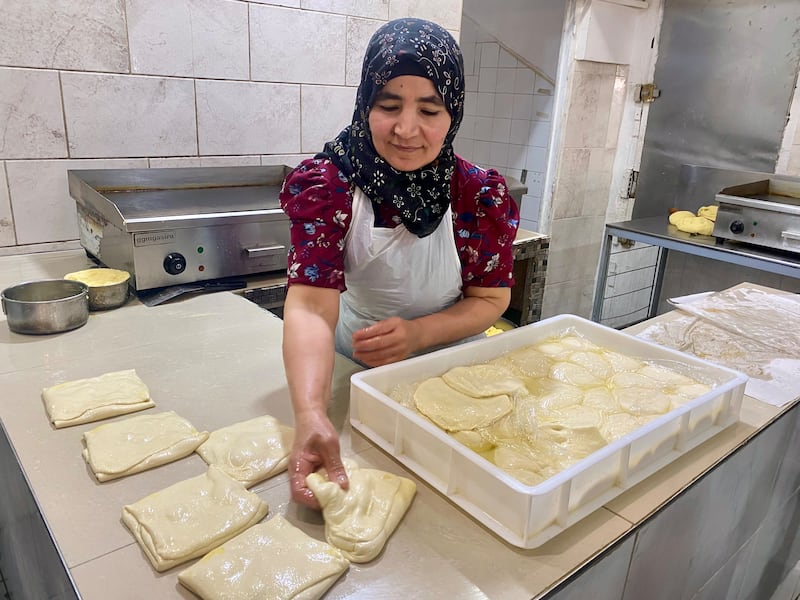
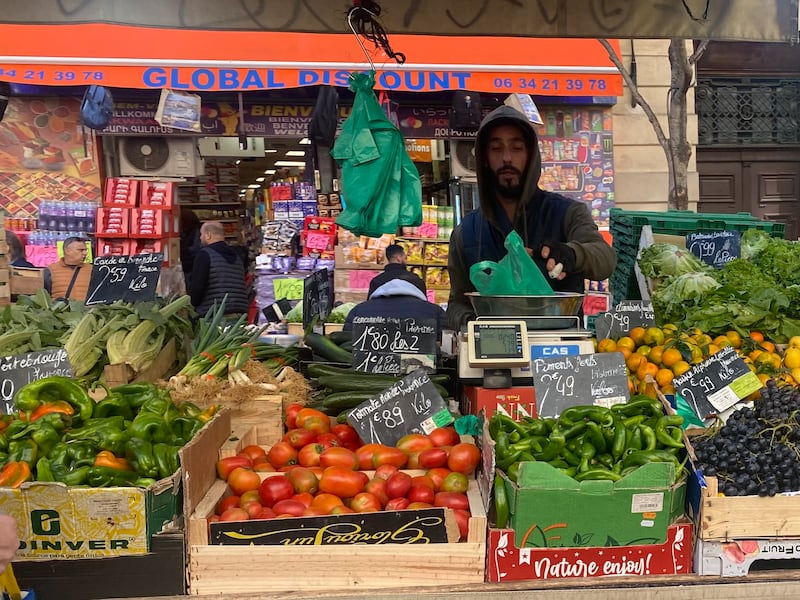
Along similar lines is La Mercerie in Noailles, which was opened in 2018 by British chef Harry Cummins (ex-Frenchie in Paris and Wild Honey in London) and Quebecois sommelier Laura Vidal. If you want a front row view of the open kitchen, sit at the long wooden bar or settle at a table and select an interesting natural wine to go with the €65 surprise five-course menu. Dishes could include corn fritters, leeks with watercress purée, crab gnocchi, barbecued duck with a smoked onion confit and a fig and cream dessert.
The restaurant and wine scene have been booming following the pandemic, as young Parisian and international chefs have flocked to the city, attracted by the lower cost of opening a restaurant on this Mediterranean stretch of coastline.
I head to Cours Julien and into Notre-Dame-du-Mont, where wine bars dominate. At Livingston, chefs prepare pasta in the afternoon for dinner service. And in Limmat, camouflaged on one side of the graffiti-covered stone staircase leading to the Rue d’Aubagne, Swiss chef Lili Gadola, cooks intriguing fish dishes, blending her native cuisine with Marseillaise influences.
One of the newest wine bars to open is Grenadine cave à vin where Corsican Nominoe Guillebot stocks low-intervention wines which are kept in a temperature-controlled “sur mesure” wine cellar. Before opening Grenadine, she worked in La Mercerie, and previous to that, was head sommelier and manager in Lyle’s restaurant in London, following a stint at Septime in Paris.
At the other end of the spectrum is AM par Alexandre Mazzia, a three-Michelin star restaurant which, if you focus on the number of dishes that come to the table – 38 on the €395 menu – could make your head spin. But it is fascinating, and different from what I expected.
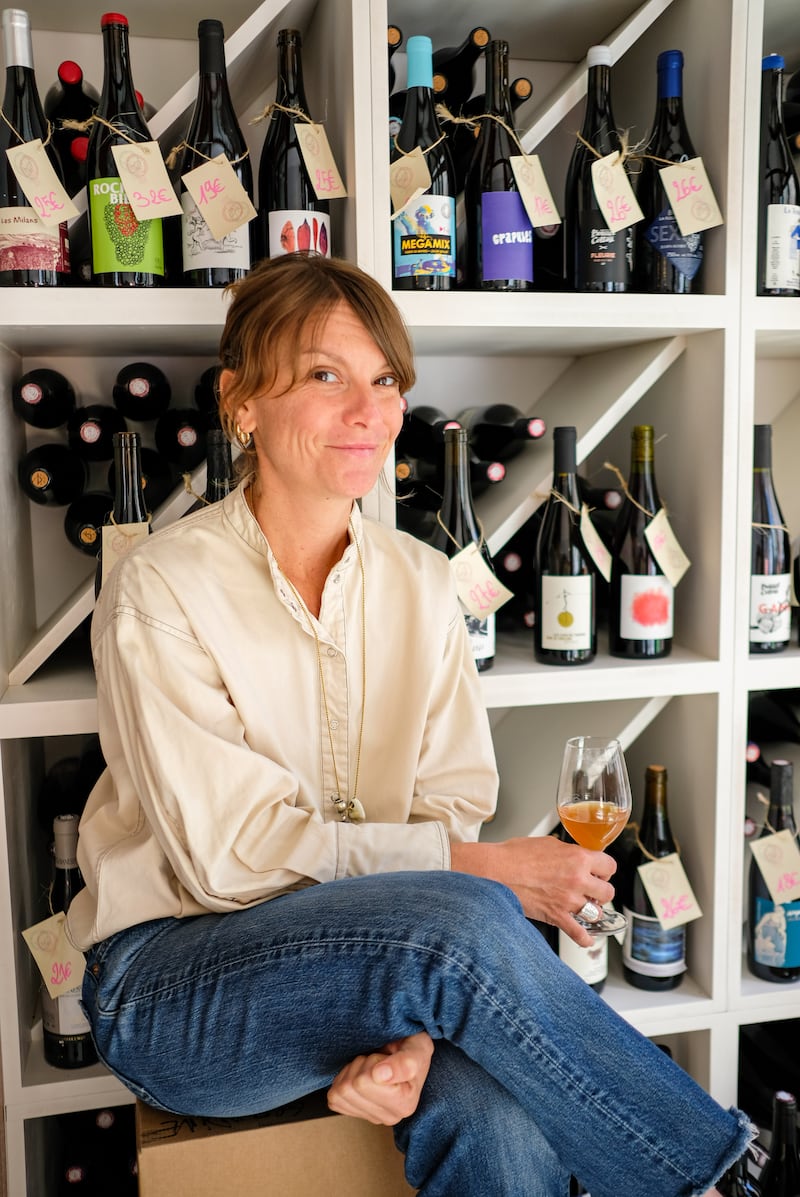
For a start, it is an incredibly relaxed room, more like a smart one-star spot with wooden tables rather than white-linen-clad tables. The vibe is relaxed, and the service keeps things precise and interesting enough to let you get on with the business of eating your meal.
The low-key chef here, Alexandre Mazzia – who seems quite shy as he briefly drops by each table – brings elements from his upbringing in the Congo, so you get heat from chillies and spices running through the food. But this is just one of the influences that contributes to some of the most original food I have eaten in a long time.
Courses arrive in waves, with a flurry of small bites served on spoons, shells, bowls and dishes. Wild trout and salmon eggs, which have been marinated in sake are dressed with smoked milk. Razor clams, cut into tiny petals and arranged like a flower, come with puffed barley and a briny seaweed condiment; an eggnog sauce is spooned on to the dish and green apple and fennel water is poured from a glass kettle into a wooden cup to drink with it. Plankton, lightly coated in candy floss is a clever receptacle for the brininess of a very good caviar.
There’s plenty of theatre – foams and sauces poured tableside – but the dishes remain light, with clever Japanese influences. It is, perhaps along the lines of DixerXO in Madrid or Alinea in Chicago (it’s better than both), though it’s closest to El Cellar de Can Roca in originality and style.
Marseilles is a fascinating, year-round destination, and if your interest is more food than beach, the shoulder months are the best time to visit. Avoiding the crowds and hot summer sun, you can still enjoy lunch on a terrace, after a stroll along the backstreets of Le Panier, Nouilles, and Cours Julien. And if you fancy a leisurely apèro with a view, head to La Caravelle on the first floor of the Hotel Belle-Vue in the Vieux Port and order a Henri Bardouin pastis. True pastis drinkers always order by brand.
Corinna Hardgrave dined at AM par Alexandre Mazzia as a guest of the restaurant
Marseilles Food Notebook
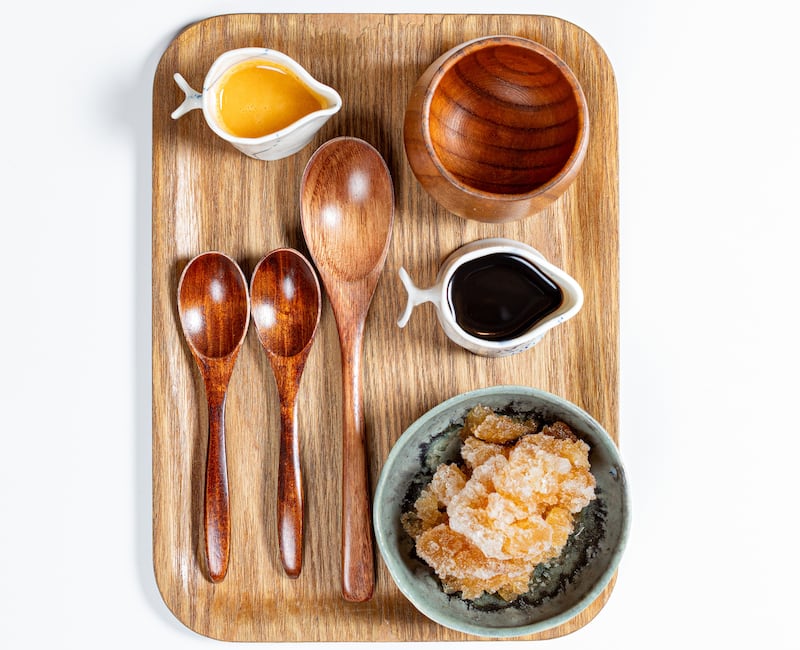
Best for bouillabaisse
- L’Épuisette, 158 Rue du Vallon des Auffes, 13007 Marseilles
- Chez Michel, 6 Rue des Catalans, 13007 Marseilles
- Chez Fonfon, 140 Rue du Vallon des Auffes, 13007 Marseilles
- Le Miramar, 12 Quai du Port, 13002 Marseilles
Fine dining
- AM par Alexandre Mazzia, 9 Rue François Rocca, 13008 Marseilles
Wine bars/cave à manger
- Grenadine cave a vin, 47 Rue d’Endoume, 13007 Marseilles
- Ripaille, 56 Rue de Lorette, 13002 Marseilles
- La Mercerie, 9 Cr Saint-Louis, 13001 Marseilles
- Livingston, 5 Rue Crudère, 13006 Marseilles
- Limmat, 41 Rue Jean-Baptiste-Estelle, 13006 Marseilles
Nouilles Restaurants
- Chez Yassine, 8 Rue d’Aubagne, 13001 Marseilles
- Sofiane Chaoui’s, 6 Rue Papère, 13001 Marseilles
- Le Femina chez Kachetel, 1 Rue du Musée, 13001 Marseilles
Pizza
- Chez Etienne, 43 Rue de Lorette, 13002 Marseilles
- Pizza Charly, 24 Rue des Feuillants, 13001 Marseilles
Fish restaurants
- La Boite à Sardine, 2 Bd de la Libération, 13001 Marseilles
- Le Petit Nice Passedat, 17 Rue des Braves Anse de Maldormé, 156 Cor Président John Fitzgerald Kennedy, 13007 Marseilles
- La Pergola, Calanque de, 13 Chem. de la Pergola, 13740 Le Rove
- Auberge du Corsaire ‘Chez Paul’, 35 Rue Desire Pelaprat, 13008 Marseilles
- Grand Bar des Goudes, 28 Rue Desire Pelaprat, 13008 Marseilles
Stock up your pantry
- Anahit, Boulevard de la Liberté, Armenian grocery
- Saladin Épices du Monde, North African grocery for spices
- Marché des Capucins, Pl. du Marché des Capucins, 13001 Marseilles
- Maison Emprereur, 4 Rue des Récolettes, 13001 Marseilles
- La Chocolatière de Marseilles, 35 Rue Vacon, 13001 Marseilles




















